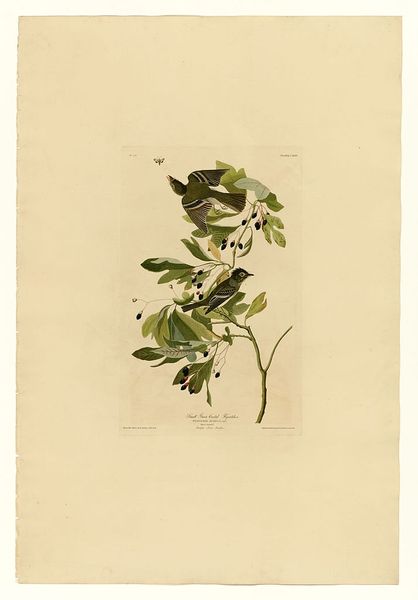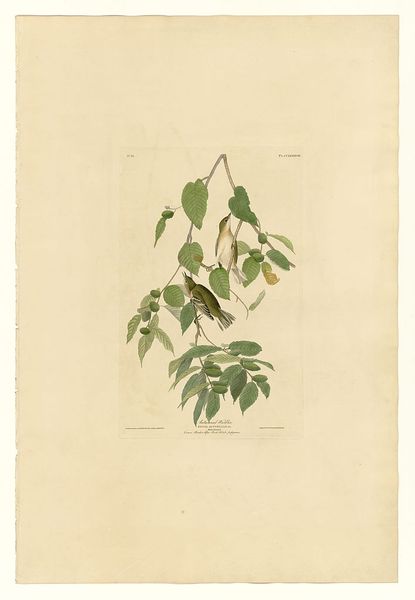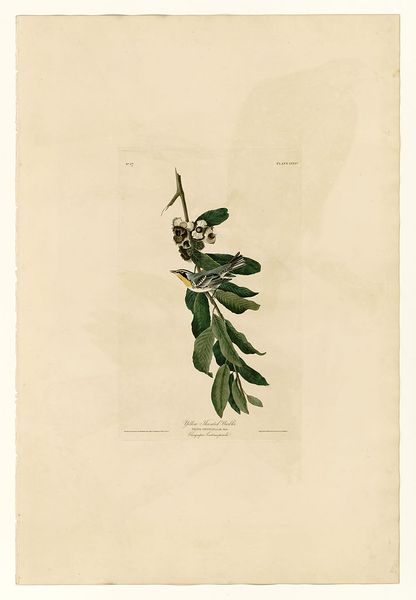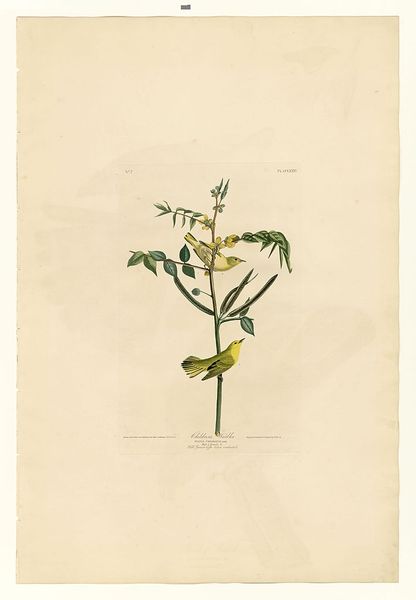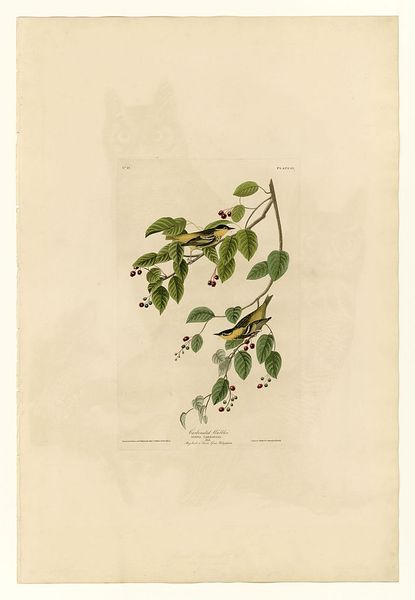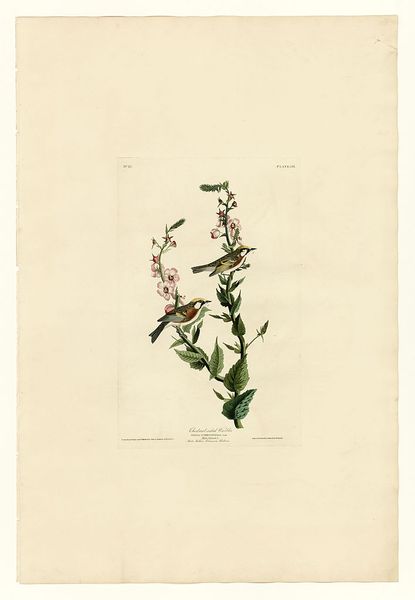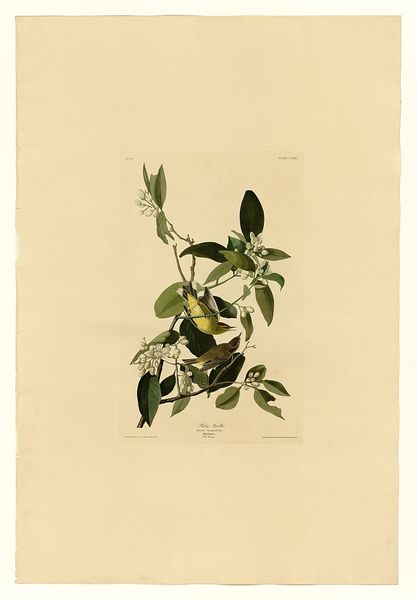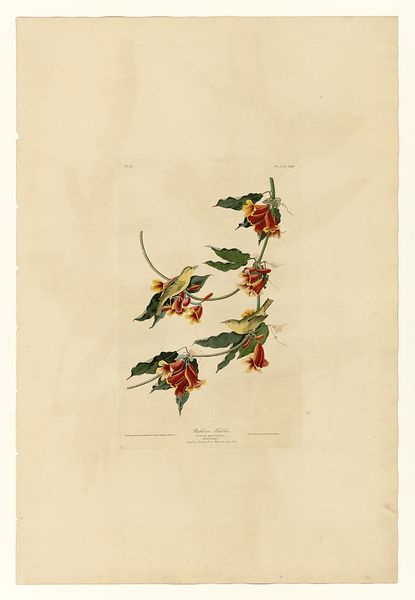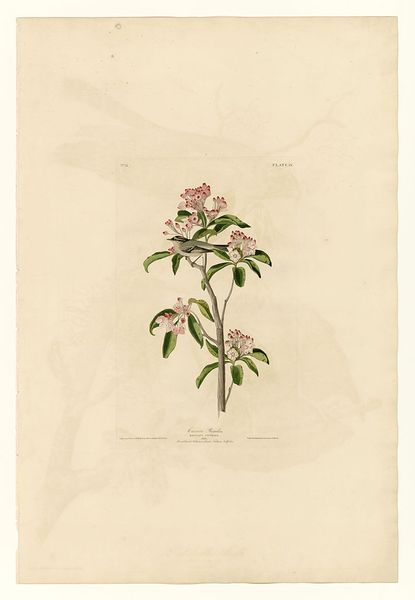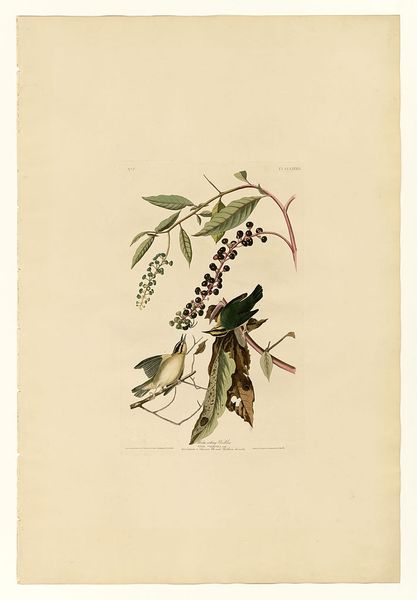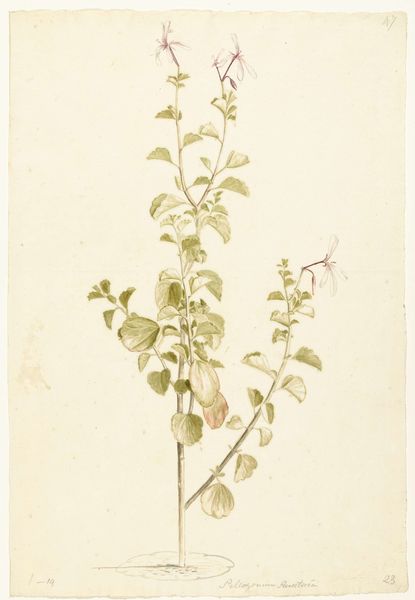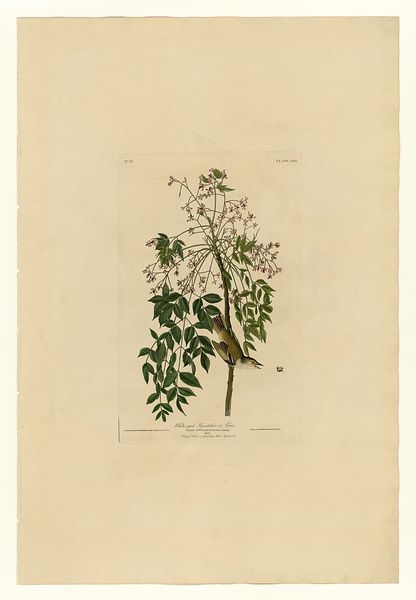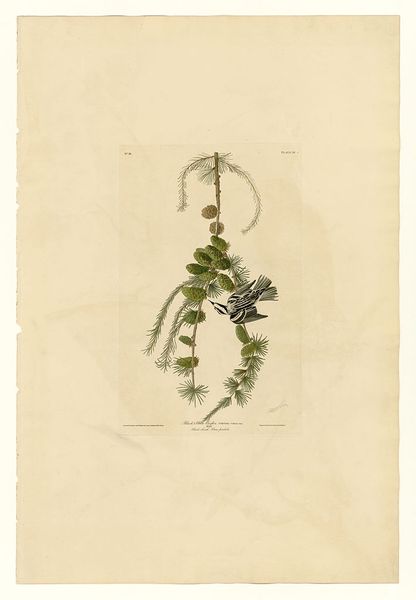
painting, print, watercolor
#
blue ink drawing
#
painting
# print
#
old engraving style
#
watercolor
#
plant
#
romanticism
#
watercolour illustration
#
botany
#
naturalism
Copyright: Public domain
Curator: Welcome. Before us hangs "Plate 160 Black-capped Titmouse" attributed to John James Audubon. It's an engraving and etching, touched up with watercolor and likely dating from the first half of the 19th century, judging by the plate number and style. Editor: It's deceptively gentle. On first glance, it seems a quiet, almost idyllic scene. But that sharply defined black cap on the birds, those carefully observed branches...there's a tension simmering just beneath the surface, like a freeze frame of a pivotal moment in nature. Curator: Audubon was so keen on precision. The titmice themselves, perky and observant, almost iconic. Consider the placement; one looking skyward, one grounded. Are they guarding territory? Scouting a path? It reminds me how integral birds are in folklore and cultural memory for their messages from above. Editor: And the branches… the way they’re bursting with new life, those delicate blossoms. Audubon witnessed America transforming through industrial expansion. So depicting nature, perhaps idealizing it through a romantic lens, can serve to document and reclaim indigenous sovereignty while facing human-wrought habitat loss. Curator: I’m struck by the scientific endeavor underlying what feels almost sentimental. Audubon, and many others of his era, wanted to catalogue and know. The quest for total knowledge, it can almost read like… like colonial intent. Editor: Exactly. This type of naturalism helped create an ordered vision of nature open for exploitation under colonial rationale. It reflects a world both utterly admired and ripe for conquest. The composition, in its attempt at scientific observation, unwittingly became complicit in the grand narratives of domination. Even here, so far removed, is there a subtle endorsement of it all? Curator: Maybe, and that complicated gaze feels present now. Naturalism seeks clarity, which also risks losing complex ecological nuance, I find, that so-called colonial intent flattens the reality on our own time. Editor: Precisely! Acknowledging the context behind naturalist art traditions might let us engage the work beyond prettified aesthetic admiration towards understanding and facing nature as something that cannot merely be depicted, controlled, or destroyed without our facing ethical questions as the species meant to protect the nature. Curator: Food for thought indeed. How these past images influence our view! Editor: Absolutely. It reminds us that even ostensibly neutral depictions carry an historical weight.
Comments
No comments
Be the first to comment and join the conversation on the ultimate creative platform.
